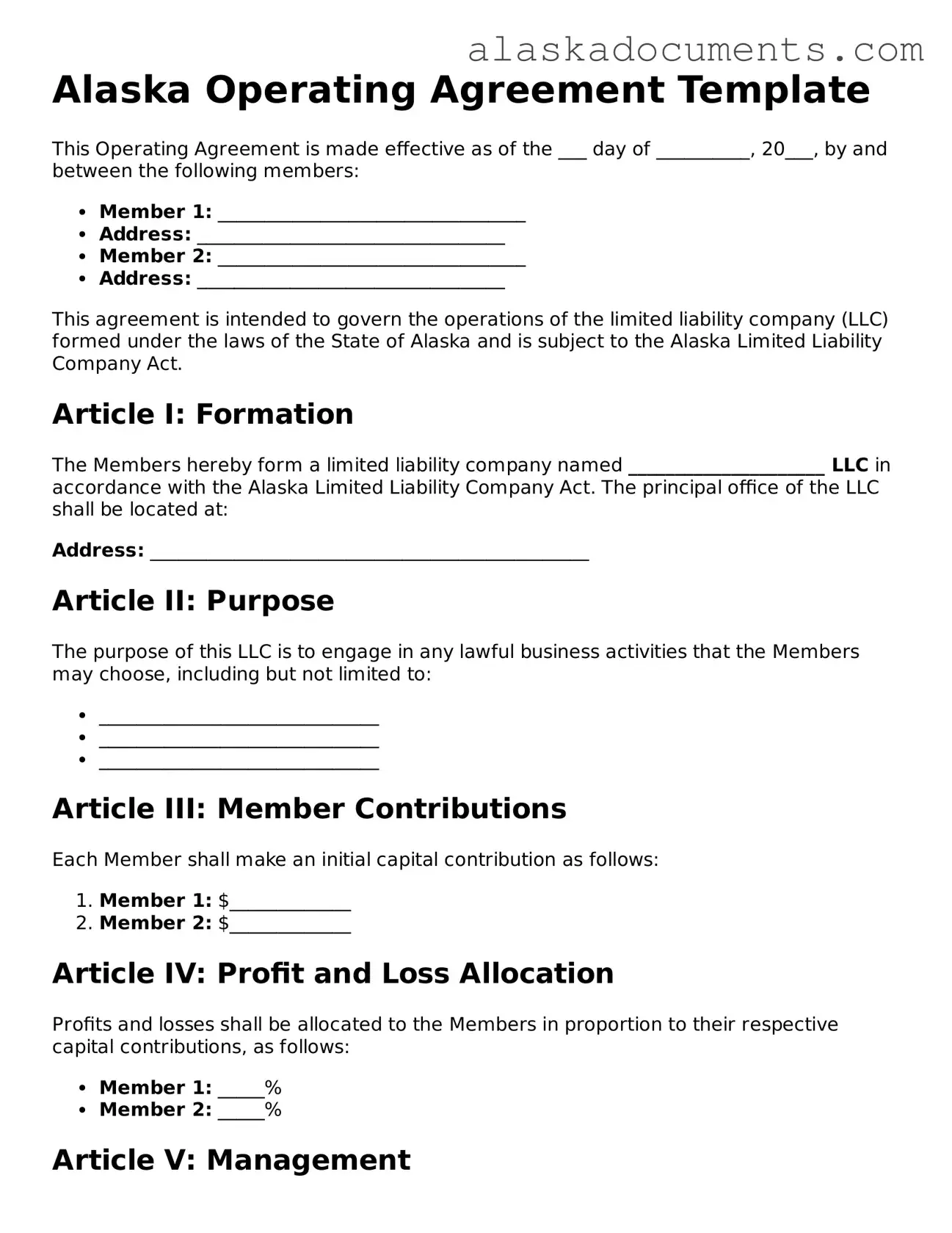Alaska Operating Agreement Template
This Operating Agreement is made effective as of the ___ day of __________, 20___, by and between the following members:
- Member 1: _________________________________
- Address: _________________________________
- Member 2: _________________________________
- Address: _________________________________
This agreement is intended to govern the operations of the limited liability company (LLC) formed under the laws of the State of Alaska and is subject to the Alaska Limited Liability Company Act.
Article I: Formation
The Members hereby form a limited liability company named _____________________ LLC in accordance with the Alaska Limited Liability Company Act. The principal office of the LLC shall be located at:
Address: _______________________________________________
Article II: Purpose
The purpose of this LLC is to engage in any lawful business activities that the Members may choose, including but not limited to:
- ______________________________
- ______________________________
- ______________________________
Article III: Member Contributions
Each Member shall make an initial capital contribution as follows:
- Member 1: $_____________
- Member 2: $_____________
Article IV: Profit and Loss Allocation
Profits and losses shall be allocated to the Members in proportion to their respective capital contributions, as follows:
- Member 1: _____%
- Member 2: _____%
Article V: Management
The management of the LLC shall be vested in the Members. Decisions regarding the LLC shall be made by a majority vote of the Members.
Article VI: Indemnification
The LLC shall indemnify its Members, managers, and employees to the fullest extent permitted by the Alaska Limited Liability Company Act against any and all expenses or liabilities incurred in connection with the LLC.
Article VII: Amendments
This Operating Agreement may be amended only by a written agreement signed by all Members.
Article VIII: Governing Law
This Agreement shall be governed by the laws of the State of Alaska.
IN WITNESS WHEREOF, the Members have executed this Operating Agreement as of the date first above written.
- Member 1 Signature: ___________________________ Date: ____________
- Member 2 Signature: ___________________________ Date: ____________
